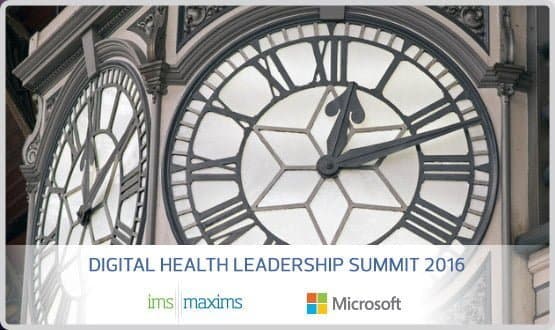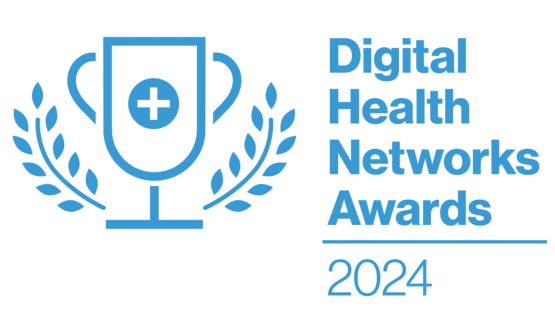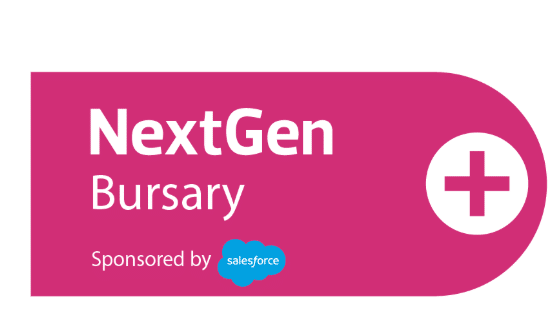Leadership summit: full steam ahead?
- 3 March 2016

In November 1840, the Great Western Railway introduced standard time across its network. Over the next few years, other companies did the same; replacing local time with ‘railway time’.
The benefits were obvious. Timetables could be drawn up. Accidents caused by confusion about when a train was due to arrive on a particular piece of line could be avoided.
Yet, as Wikipedia notes: “the railways sometimes faced concerted resistance from local people, who refused to adjust their public clocks to bring them into line with [what was also called] London Time.”
No wonder so many of the speakers at the first Digital Health Leadership summit used this as a metaphor for the current state of healthcare IT.
Local, national, collaborative
As Andy Williams, the chief executive of the Health and Social Care Information Centre, told the delegates at Coombe Abbey Hotel in Warwickshire, the NHS has been trying to introduce electronic health records for two decades.
It’s just that different approaches have failed to deliver consistent results. “We tried ‘let a thousand flowers bloom’; and that didn’t quite work,” he said, referring to the ‘national strategy, local implementation’, many suppliers vision of the 1998 ‘Information for Health’ strategy.
“So then we had NPfIT, and while that achieved some things, it didn’t really work either,” he went on, referring to the National Programme for IT in the NHS that launched in 2000 to deliver infrastructure and EPRs to local health economies via national contracts with very large companies.
“So what we need to do now is to work collaboratively on this. We need to work out what the centre needs to do and what local organisations need to do.”
Stars in alignment
All of the keynote, national speakers at the event attended by members of the Health CIO and CCIO networks and senior trust executives, were in agreement that the ‘stars are in alignment’ for digital health, and this kind of collaboration is the way to secure it.
Williams, Professor John Newton, the interim chair of the National Information Board, and life sciences minister George Freeman, who ‘attended’ by video, all argued that the political will, strategic direction, and cash were in place.
The political impetus, they agreed, came from health secretary Jeremy Hunt, who first outlined a vision of a ‘paperless’ NHS three years ago, and from Freeman, who more recently took up the life sciences post straddling the Department of Health and the Department of Business, Innovation and Skills.
The business imperative came from the ‘Five Year Forward View’ issued by NHS England chief executive Simon Stevens in October 2014, to try and close a £30 billion gap between funding and demand with £8 billion of ‘new’ funding and £22 billion of efficiency savings by 2020-21.
And the strategy came from the ‘Personalised Health and Care 2020’ framework that was issued by the NIB in November 2014 to support the Forward View, and from the NIB works-streams and demand for local digital roadmaps that have followed.
Building the railroad
The money, £4.2 billion, was announced by Hunt on the Andrew Marr show last month, with £1.8 billion earmarked for EPRs and the ‘paperless’ agenda.
As Newton told the delegates, the money had been won “despite wariness of IT projects that goes deep in government” (not least because of the NPfIT experience) and the general state of the public finances.
And it had been won because: “Ministers really get this; that that digital is safer, that the centre’s role is to build a platform to help you delivery, and that this is not about technology but what it can do.”
On the platform front, Freeman himself returned to the railway analogy, saying it was the government’s job to “develop the railway” on which local initiatives could run by, for instance, developing a “protocol for interoperability” and sorting out information governance issues.
But he also stressed that services needed to be developed quickly for the public, to create a “roar” of demand and get patients “standing outside Parliament with placards asking when we are going to do this.”
Which might sound ambitious until you remember that Thomas Cook ran his first excursion in 1841 (taking 200 passengers 12 miles to a temperance meeting for a shilling a pop).
Working for staff, working for patients
Most local IT deployments have taken rather longer to gain traction. Dr Sam Barrell, the chief executive of Taunton and Somerset NHS Foundation Trust, pointed out that it has lived the EPR history of the past two decades; having helped to develop SWIFT, seen it sold to EDS, implemented Cerner Millennium as part of NPfIT, and then turned to openMAXIMS.
Yet Barrell stressed that the reason for the trust’s latest implementation is to “create a happier, safer, more efficient hospital”. She said the staff survey suggested that the initial deployment – of a patient administration system, theatre and A&E modules – was already having an impact on the first.
A ‘phase two’, focused on e-prescribing and ‘active monitoring’, and an integration with the Emis Web system used by local GPs, will follow later this year.
Down on the south coast, Fiona Dalton, the chief executive of University Hospital of Southampton NHS Foundation Trust, said her trust was focusing on new, digital services for patients; such as telephone consultations and the development of a personal health record.
She argued, however, that clinicians and patients need a reason to use such services; and predicted that the ‘My Health Record’ would really take off when it included pathology results.
Delegates questioned how trusts would be funded for online work; when clinical commissioning groups were reluctant to pay as much for digital consultations as physical ones.
But Joe McDonald, the chair of the CCIO Network, and a consultant at Northumberland, Tyne and Wear NHS Foundation Trust, said they had to get into it, given the arrival of private online, therapy, consultation and pharmacy services, and patient demand for them.
The key, he argued, would be to innovate using commercially available technology, such as Cloud storage or messaging platforms, and to start changing workflow. “Someone put it very well earlier, when they said patients go to outpatients to remind doctors to look at their notes,” he said.
“What we need to do is to make more of those reminders digital, and then communicate differently. At the moment, the NHS is the only organisation in the world that does not want your email address.”
Identifying barriers
Despite the progress that some trusts are making, it is clear that the health service finds it difficult to implement systems or to innovate at scale. The summit held a café workshop on why this might be the case.
One issue that came up from table after table was changing political imperatives, and another leadership. The Nuffield Trust, whose director of healthcare systems, Candace Imison, attended the event, recently issued a report arguing that boards need to engage with the digital agenda, and make sure they are applying best practice to implementations.
Digital Health’s own, first, annual NHS IT Leadership Survey suggested that one barrier to doing this might be the lack of representation of both IT managers and clinical IT leaders on boards.
However, Professor Michael Thick, the chief clinical information officer for IMS Maxims, pointed out that leaders also need to think about the wide variety of staff groups and personalities they needed to deal with.
“You will have the Eyeores, the guys from the Muppets who sit in the gallery and criticise everything, the Tiggers who bounce on everybody, and people who are just pragmatic,” he said. “You need to influence all of them.”
Another issue that came up was that implementations can stall. The NHS has any number of trusts that have rolled out one or two modules of a system, and then got no further with it; or that have failed to take up technology adopted by pioneers.
A good example was given on the second day of the summit, when Professor Mike Murphy from Oxford University Hospitals NHS Foundation Trust outlined the work it has undertaken to roll-out blood tracking and to install a fully paperless system for ordering blood products.
Despite impressive safety benefits, few trusts have followed suit; and delegates speculated on reasons that ranged from a lack of knowledge about the work, to “a loss of confidence” at organisations with less effective trials of the technology, to a lack of pressure for change from regulators.
Sticking to the vision
Further barriers to working at scale included money, the perennial concern that information governance prevents data sharing (whether it actually does or not), integration challenges, analytic capability, and silo working.
At the end of the day, Andy Kinnear, the leader of the Connecting Care Partnership, which has built a shared care record in Bristol, said the only way to overcome these issues was to have a bunch of people who trusted each other enough to solve them and go on solving them.
“I have sat at the same desk for ten years, and I have worked for at least five different organisations,” he said. “I have five lessons to show you [from Connecting Care] but only one matters; and that is that this is all about people and how they behave.”
News from down-under
If it is any consolation, the NHS in England is not alone in the pressure that it faces, in its IT responses, or in the challenges that it faces to getting them used at scale. The summit hosted a delegation of Australian and New Zealand IT leaders, who said their organisations also have rising demand and limited funding to deal with it.
Both countries have seen regional NPfIT-like projects come and go, leaving hospital chains to pick and implement their own EPRs. And the Australian contingent said they envied England’s Spine and NHS Number, since they lack similar ‘rails’ to join them together.
Against this backdrop, Gregory Stevens, the chief medical officer of HealthShare in New Zealand, said his top tip was to have a crisis. The Christchurch earthquake, he pointed out, had turned a struggling shared record project into a vital resource when it suddenly became one of the few ways for clinicians to access patient information.
Without a crisis, Bruce Winzar, the chief information officer of Bendigo in Australia, which is building a new hospital and has just appointed InterSystems to supply its EPR, stressed the importance of executive buy-in.
The sixteen chief executives in his group had sat down together once a month for a whole year to come up with a strategic plan that also envisages a significant shift towards telehealth.
With that in place, he said, his top tip for a successful implementation was to keep integration to a minimum – “because even if everything is supposed to be HL7 you are going to get bubbles” – and to focus on training staff who may have very different experiences of IT.
Solving the interoperability piece
Integration had its own focus at the conference. McDonald outlined the principles behind the Newcastle Declaration that the CCIO Network drew up last year, which seeks to prevent providers or suppliers preventing the information that clinicians need from reaching them.
Paul Cooper, the research director of IMS Maxims and vice chair of techUK, said the industry body’s recent interoperability charter had many of the same principles; and it was now up to trusts to “ask the right questions” of companies to get it embedded and working.
David Stables, the co-founder of Emis who has set up his own charitable trust to promote interoperability, pointed out that the Endeavour, from which his trust takes its name, had “discovered Australia” and “then sank.” He said he wanted the trust to do the same; to achieve its aim and disappear.
But he outlined a rather different route to this end, saying he was increasingly convinced that local health economies should control their own data, and then ask suppliers to provide services that use it.
“We need companies to come forward with a service model and not a licence model,” he said. “Once everybody can access the data with common APIs, you can have lots of providers; if you are a paediatrician, you can have the same choice of two or three paediatric systems as every other paediatric consultant in the world.”
Lessons from the GWR
Once the infrastructure for something exists, services to run over it can take off very quickly. Thomas Cook was taking people to the Great Exhibition by 1851 and to the continent by 1855. Even so, his passengers sometimes had to change trains, because companies continued to use different gauges until 1892.
Railway time was not the only standard that needed to be set. In the end, it took a Royal Commission to rule on the merits of broad and standard gauge; and fifty years for the Great Western Railway to finish moving from one to the other.




